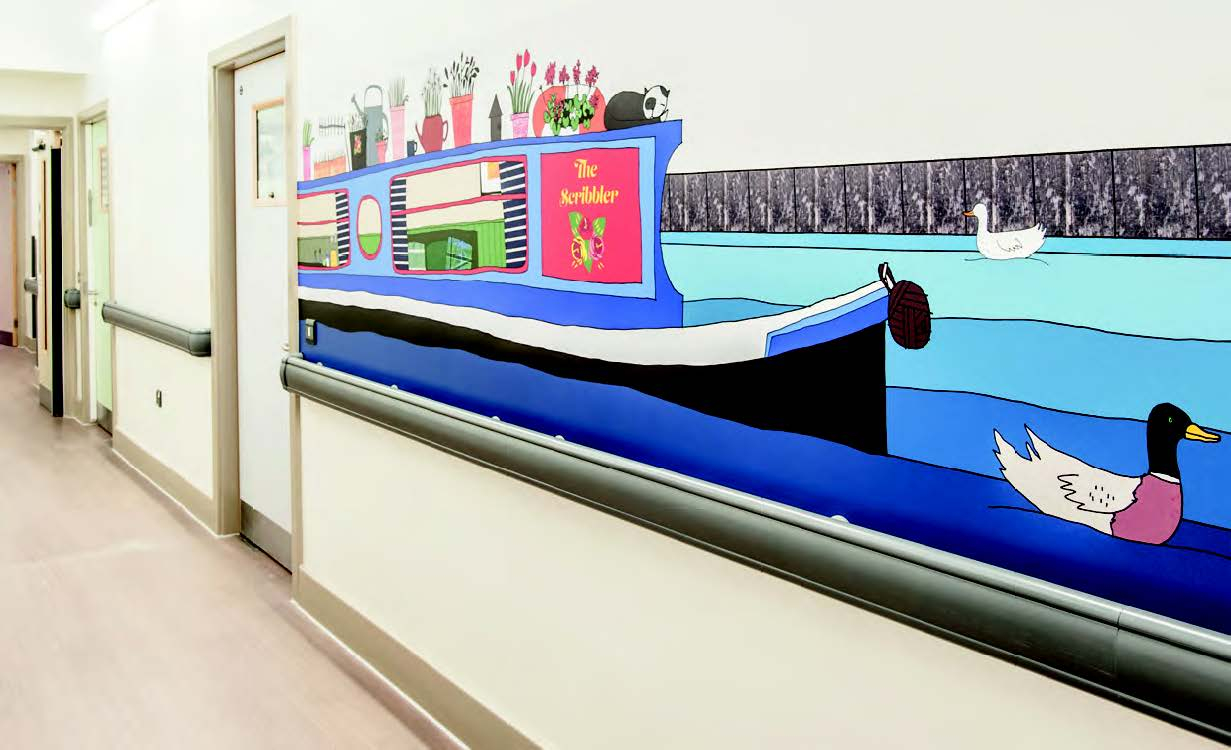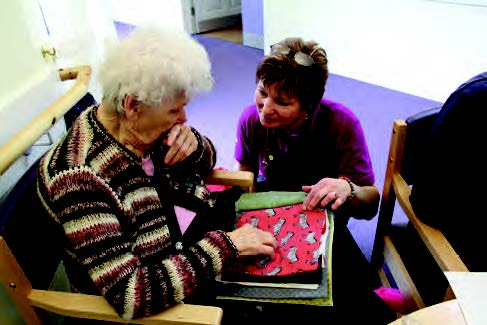
Is the growing trend for interior murals in dementia care settings causing unnecessary stress for residents?
Murals of 1950s shopfronts or village and town scenes are sweeping the care sector, fuelled by the knowledge that people with dementia can often only remember their earlier lives.
But design experts are warning that, while there is a definite place for these large-scale wall murals, they can be ‘confusing and visually disturbing’. And they could end up exacerbating the stress and anxiety that is often a symptom of living with dementia.
What is real?
Wendy Mitchell was diagnosed with early-onset Alzheimer’s at the age of 58. She has written books on the subject and explains, “I really hate these murals. They are so confusing. What’s wrong with a nice painting, or simply a window with a view? Why make us think we’re somewhere else?
“If you are already feeling disorientated, why would you want to be in a room where you look at the wall and always see a policeman on a bike riding towards you, or a large retro aeroplane parked in your dining area?
“I agree that people with dementia can benefit from areas with bright contrasting colours and visual stimulation, but if I had to live with a large busy mural I’m sure there’d be times when I’d want to simply ‘turn it off’.”
Her comments are echoed by Sarah Waller, an associate specialist at the University of Worcester’s Association for Dementia Studies. She said, “I saw an example where there was a mural of a traditional, life-size telephone box. But you could see a tear around the handle where obviously someone had been trying to open it.
“In another home you come round a bend in the corridor and there’s a scene on the wall looking down into a valley and the handrail on the wall in front of the image makes it look like you are on a balcony. It can be terribly disorientating.”
Jane Willis, director of Willis Newson arts consultancy, has been involved in a number of dementia-friendly arts projects. She said: “Recreating pseudo-realistic scenes that attempt to look real, but are not real, can be very confusing and frightening for people living with dementia."

Engaging carers & family

Tactile artwork is soothing


Dementia-friendly art can find a way
The experts are not discounting artworks completely as long theme and placement are carefully considered.
Waller says, “Artwork used sensitively can help to create a welcoming and homely environment. It should prompt people to take notice of the present moment by appealing to the senses. Colours should be vibrant with strong tonal difference. Include artworks with different textures that can be touched and stroked as this sensory stimulation appears to be particularly soothing to people with dementia. Reflecting the movement of leaves on the trees outside, the feel of the sun – will help anchor, calm and reassure.
Artwork can also be used to support navigation and wayfinding. And it should also support carers and visitors, enabling them to start conversations.”
Staying neutral
Like Willis, Waller and Mitchell favour images of nature and also local scenes that will be familiar to people with dementia. Waller adds, “We know access to nature is essential for feelings of wellbeing. But we must be careful, particularly in communal settings. Not everyone will like what you choose, so something neutral makes common sense, even if others might think it is boring.”
Waller’s other top tips for images include:
Waller says, “People with experience need to be part of the decision-making process when choosing artworks as some may not be suitable for a particular environment. For example in care homes sometimes staff feel they have to display donated pictures when they are not suitable for dementia care environments.